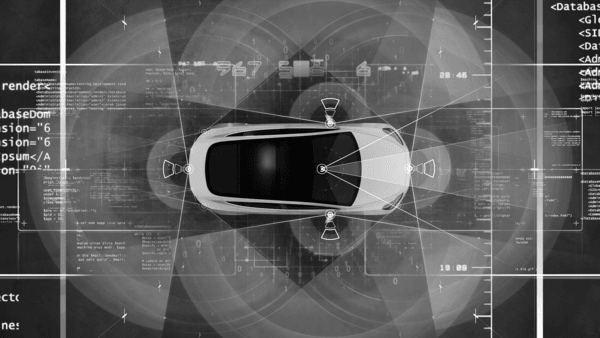
6 Ways Coronavirus Is Going to Change the IT Industry Forever
July 8, 2020
How Can SAAS Make Business Owners More Competitive and Efficient: SAAS Myths Debunked?
July 21, 2020As technology in cars continues to expand, so does the amount of data that vehicles collect on their owners. Automotive manufacturers and suppliers may use this data to offer services to their customers that can benefit them. This data can also be used to predict if a vehicle system is predicted to fail in the near future. Combined with a global pandemic and a preference for over the phone or internet model, a new generation of data center requirements are likely to be needed to manage, monitor, and secure this important data.
What Are Autonomous Cars?
Levels of Autonomy
The Society of Automotive Engineers defines six levels of automation:
- Level 0 – The human driver is responsible for all aspects of driving at this level of automation, including braking, steering, and navigating the vehicle.
- Level 1 – The vehicle can handle throttle and braking or steering. The driver must be prepared to take over the vehicle at any point. While the vehicle does take in some information about the driving environment, the driver is ultimately responsible for the vehicle. Self-parking and lane assistance are examples of technology at this level of automation.
- Level 2 – At this level of automation, the vehicle can handle both throttle and braking capabilities and steering. While the driver has to be alert at all times and is responsible for monitoring the surroundings, the vehicle is starting to take over some of the main responsibilities of driving. This type of automation may allow vehicles to be automatically steered on undivided roads with speed restrictions.
- Level 3 – At level 3 automation, a driver must still be behind the wheel, but he does not have to monitor the vehicle. Instead, the vehicle does this, as well as changes lanes, handles steering, and brakes. Nonetheless, the driver must be ready in case of an emergency to take back control of the vehicle.
- Level 4 – At this level of automation, the vehicle can perform all driving capabilities under certain conditions. If the vehicle needs assistance from the driver, it will alert him.
- Level 5 – At level 5 automation, the driver becomes obsolete. A driver may not even be in the vehicle. The vehicle can handle all driving conditions under all possible driving conditions.
The Impact of Autonomous Cars on Data Centers

Credit: Data Center Frontier
Because of the fast pace of technological innovations in the automotive industries, data centers will soon be tasked with the responsibility of managing, controlling, and protecting huge amounts of data. Intel estimates that autonomous vehicles may generate 4 terabytes of data each day.
These vehicles will collect and share important data, including GPS, video, sensor movements, and more. The vehicles rely on this data to provide automatic braking, collision protection, emergency assistance, and other safety features.
The higher the level of automation, the higher the amount of data that must be captured.
Data Storage Needs With Autonomous Vehicles
Autonomous vehicles have high data storage and connectivity needs. A complete infrastructure for a large fleet of these vehicles may include:
- On-board computers
- Wireless connectivity
- Wireless connectivity to other vehicles and smart infrastructure
- Edge data centers capable of running analytics on data from many vehicles at a time
- Core data centers that perform deep analytics based on the data sent by edge data centers
How Data Centers Can Adapt

Credit: Self Driving Times
Because there is so much potential data that may be involved, data centers will have to move beyond their traditional data limitations. To operate the most efficiently, vehicles will need to be equipped with fast internet access and data center clouds that provide them with up to date information to complete intelligent driving.
Some ways that data centers can adapt to these inevitable changes include:
Increase Storage Capacity
Older systems may not have the necessary storage capability that these vehicles require for efficient operation. Data centers may need contacts with cloud storage services that provide unlimited capacity so that they can scale.
Increase Power, Connectivity, and Intelligence
Since many safety features will rely on connectivity to provide the necessary information to the vehicle, high-speed internet at 5G or above will be necessary to ensure the safety of users. Additionally, more powerful analytics and intelligence will be necessary to derive value from the massive amount of data. Furthermore, electric power capabilities will need to be upgraded while data centers also explore opportunities for alternative power sources so that they can still operate if the power grid fails.
Use Co-Locating Equipment
Rather than building completely new infrastructures, data centers may be able to tap into existing co-locating equipment in their centers or other data centers.
Use Hyperconnected Data Centers
The days when data centers can independently operate may be gone. Autonomous vehicles may need to use hyperconnected data centers that seamlessly share information between them, the cloud, and vehicles.
Use Other Forms of Data Storage
Older forms of data storage like offsite tapes may not be equipped to handle the growing needs of autonomous vehicles.
Provide a Clean Transition
It will be important that data centers grow gradually to meet the new challenges and opportunities that autonomous vehicles present. They must be able to grow their capabilities while still allowing users’ current needs unfettered.
Increase Data Security
With vehicles being more connected and reliant on data, data centers will need to be sure that they can protect their systems and prevent them from being hacked.
While change is sometimes scary and may require other systems to adapt to it, this is an exciting time for the automotive industry. It may be able to meet the needs of drivers to have fully autonomous transportation that is safer, more efficient, and more responsible. Data centers are rising to the challenges and opportunities presented by these technological changes.
Main Photo Credit: DXC Technology

